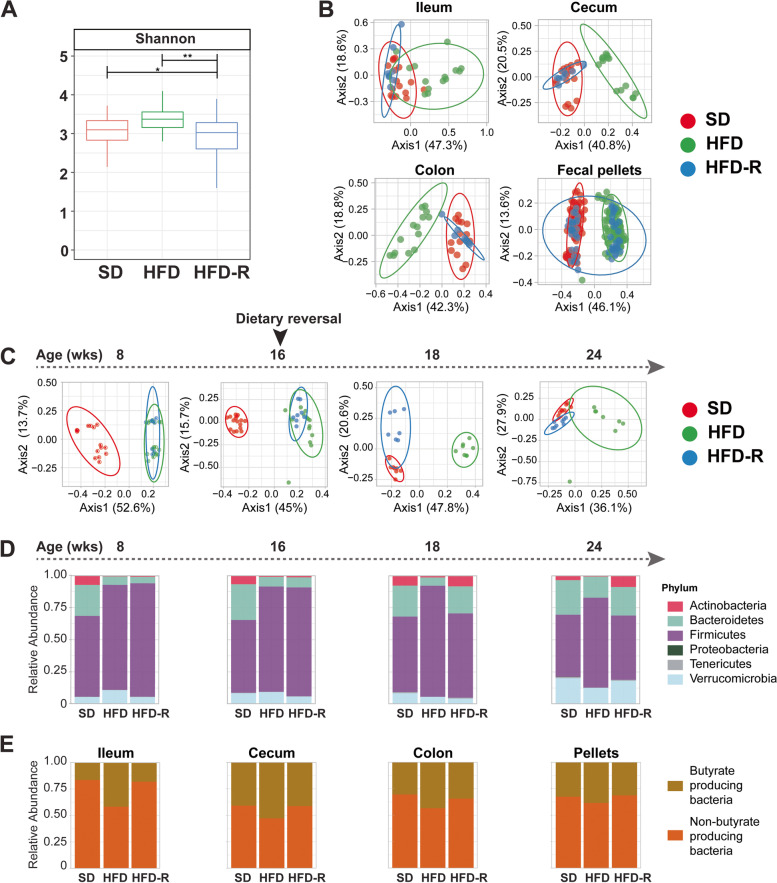Fig. 2.
Dietary reversal shifts microbial structure in obese PN mice. A Intragroup microbial diversity is significantly higher in HFD (green; n = 135) versus SD (red; n = 140) and HFD-R groups (blue; n = 84) as assessed by alpha diversity using Shannon index. One-way ANOVA; *P < 0.05, **P < 0.01. B–C Inter-group microbial diversity assessed by beta diversity by ASV clustering by principal coordinate analysis. B Differences between gut microbiota community structure in SD (red), HFD (green), and HFD-R (blue) in the ileum, cecum, colon, and fecal pellets. Samples from HFD-R mice prior to dietary reversal from 8 to 16 weeks (wks) of age clustered with HFD samples. All time points are shown (16 and 24 weeks for ileum, cecum, and colon; biweekly samples from 8 to 12 and 16 to 24 weeks for fecal pellets). C The microbial community structure in fecal pellets at different time points (8, 16, 18, and 24 weeks of age) rapidly responds to HFD, which is reversed by dietary reversal within a short timeframe (SD, n = 7–16, red; HFD, n = 7–16, green; and HFD-R, n = 6–8, blue). D Stacked bar plot of the relative abundance of the most abundant taxa at the phylum level in fecal pellets at 8, 16, 18, and 24 weeks of age (SD, n = 7–16; HFD, n = 7–16; HFD-R, n = 6–8). E Stacked bar plot of the relative abundance of butyrate-producing bacteria at 24 weeks of age

